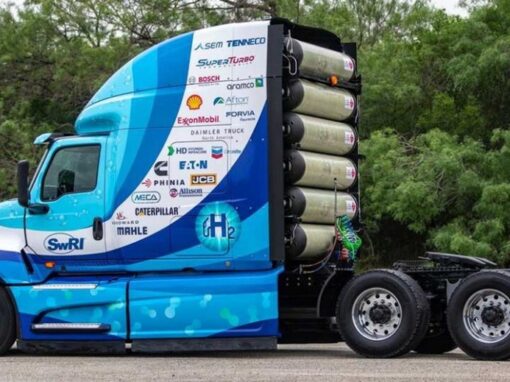The public and private sector are doubling down on its commitment to deploying what experts say is a crucial piece to a net zero carbon future. A recent report by the International Renewable Energy Association (IRENA) proclaimed the 2020’s as the “decade of hydrogen,” with the industry primed to see rapid growth similar to what wind energy saw in the 1990’s, solar in the 2000’s, or batteries in the 2010’s.

Shifts in the value of trade in energy commodities (Source: International Renewable Energy Agency)
The report lists two key factors that will contribute to hydrogen’s growth. First, countries across the globe are pursuing ambitious net-zero emission targets by the middle of this century. To achieve these goals, clean hydrogen will be needed to decarbonize hard-to-abate industries such as shipping, heavy-duty trucking, industrial processes like steel and cement, and aviation to name just a few. Second, the declining cost of renewable energy and electrolyzers are making green hydrogen an economically attractive option.
The environmental benefits of hydrogen are substantial. By 2050 in the U.S. alone, widespread hydrogen deployment could result in a reduction of carbon emissions in the transportation sector by 30% and NOx emissions by 36%. Hydrogen is also replacing diesel generators in industrial production, reducing air and noise pollution while increasing reliability of the electric grid.
Apart from the impact on the climate, hydrogen will create new potential for nations to become energy exporters. Historically, access to energy has been a major factor in deciding the location of industrial activity. However, countries that currently depend on fossil fuel imports but have ample renewables potential, such as Chile or Namibia, could become sites of green industrialization. Although hydrogen is still very much a localized business — close to 85% of hydrogen gas is produced and consumed on-site within a facility — over time, hydrogen could become an internationally traded commodity.
Industry is playing a pivotal role in accelerating the hydrogen decade through investments in manufacturing and new facilities. To name a few, in just the last year:
-
FCHEA member Nel Hydrogen recently announced plans to build a $400 million automated gigawatt (GW) electrolyzer manufacturing plant in Michigan.
-
FCHEA member Cummins revealed that its zero-emission technology brand Accelera will soon begin to manufacture electrolyzers at its 500 MW plant in Fridley, Minnesota. As part of the Biden Administration’s “Investing in America’ tour, President Biden visited the Cummins Power Generation Facility recently to show support for the technology.
-
In Massachusetts, FCHEA member Electric Hydrogen announced that it has leased a 187,000 square foot facility with an annual manufacturing capacity of 1.2 GW.
-
In New York, FCHEA member Plug Power is on track to scale its 2.5GW gigafactory up to 100MW per month by mid- of 2023, with plans to further increase output.
-
And in Texas, FCHEA member Air Products announced plans to invest up to $4 billion to build, own and operate a green hydrogen production facility in Wilbarger County. The project will include approximately 1.4 GW of wind and solar power generation, along with electrolyzer capacity capable of producing over 200 metric tons per day of green hydrogen. And this by no means an exhaustive list of industry activity, with announcements for new investment being made almost daily.
With the Department of Energy slated to announce funding decisions to the regional clean hydrogen hubs program this fall, the decade of hydrogen is truly in full swing. As hydrogen continues to scale up, FCHEA looks forward to helping industry navigate the resulting changes. And when we look back at this moment many years down the line, FCHEA will confidently say we were leading the charge and laying the groundwork well before the decade of hydrogen.



